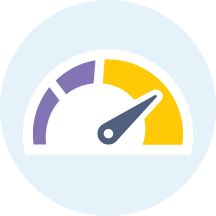Everyday life requires and depends on a reliable Internet connection. Think about it, you use it for email, banking, streaming, shopping, research, entertainment and so much more. This is something you need and need it fast!
Gigabit Internet means you are 1,000,000,000 bits per second or 1,000 megabits per second. This is 100 times faster than the average Internet speed in the United States. Gigabit Internet uses a fiber optic line which is capable of reaching higher speeds than traditional copper lines used by most DSL and cable connections.
There are a lot of benefits in using gigabit connections that can take your streaming, playing, learning and work to the next level! From game changing speeds to lower latency and unmatched reliability learn how you can benefit from gigabit connections for GigabitNow Fullerton fiber Internet.
Some of the other benefits that you will get from a gigabit connection are listed below.

Reliability
Fiber Internet is more reliable than copper competitors DSL and cable. Gigabit Internet uses fiber optic cables to transmit data which has more reliable advantages over the other Internet providers. First, fiber optic cables do not corrode over time or ever. While DSL and cable do corrode and take a beating from adverse weather conditions. Two, adverse weather conditions do not affect fiber optic cables. Fiber optic cables do not see interference from extreme temperatures, wind gusts, rain or snow or any of the like. Meanwhile DSL and cable are both susceptible to adverse weather conditions, including corrosion. Three, fiber optic cables are installed underground, not on telephone poles. Whereas, DSL and cable Internet are both installed on poles making it far more likely to become disconnected. Four, fiber optic cables do not carry an electric current like copper. So older copper wires are prone to catching fire. Five, fiber optics are directly connected to a home or apartment unit so there is no sharing bandwidth with your neighbor especially during peak hours of the day.

Lower Latency
Being the newest technology on the market fiber Internet has a lot of advancements and features. One of them is advanced data transmission, giving it 5 to 20 milliseconds of response time, unlike DSL and cable. Gigabit fiber Internet uses fiber optics which use glass that allows for faster data transmissions at over longer distances without disruptions. Whereas, DSL and cable use copper wiring and is prone to environmental disruptions.

New Level of Entertainment
Being the newest technology on the market, gigabit fiber Internet takes your entertainment to a whole new level. With faster data transmission that gives way to faster, reliable symmetrical Internet speeds, lower latency, and a higher quality connection creating a seamless experience that’s faster, smoother and more reliable whether you’re gaming, streaming, learning or working from home. Fiber Internet is future-proof, this allows you to take advantage of the newest technology that comes out without ever having to worry if you’ll be able to use it or not. Unlike competitors DSL and cable which both come with their limitations for using the latest technology. Take gaming for example, if you’re connected via cable connection it’s an old copper infrastructure that’s aging. The aging infrastructure can start to corrode making for slower data transmission in-turn making slower Internet speeds which can cause buffering.

Room for Everyone’s Devices
Have you ever noticed how many devices you use to go online every day? Imagine living with other people in your home who use about the same number of devices or more and you’re all using these devices around the same time in the morning and when you’re home later on. Fiber Internet has more than enough bandwidth for multiple devices and users at the same time and to carry-out seamless interactions with those devices. Why? Because fiber Internet can carry data at the speed of light transmitting data much faster. While DSL and cable competitors transmit data through copper cables from the nearest telephone exchange to your home, making for slower speeds.

Symmetrical Internet Speeds
Fiber Internet gives out symmetrical Internet speeds, as an example, 1,000/1,000 Mbps for download and upload allowing you to download and upload data at a faster rate which ultimately allows you to do more. You will notice this if you are streaming, use video conferencing, online gaming or continuously work with large file transfers, cloud storage and backup. Meanwhile DSL and cable providers only provide asymmetrical Internet speeds, as an example, 60/3, 60 Mbps download and 3 Mbps upload speed, which can hinder your online activity whether you are streaming, playing, learning, or working. You will notice this if you are streaming, use video conferencing, online gaming or continuously work with large file transfers, cloud storage and backup — you will experience slowness and buffering.
| Approximate File Size | 1,000 Mbps Fiber Connection | 100 Mbps Cable Connection | 25 Mbps DSL Connection | |
|---|---|---|---|---|
| 4 Minute Song | 4 MB | 0.03 s | 0.32 s | 1.28 s |
| 9 Hour Audiobook | 110 MB | 0.88 s | 8.8 s | 35.2 s |
| 45 Minute TV Show | 200 MB | 1.6 s | 16 s | 1 min 4 s |
| 2 Hour Movie | 1.5 GB | 12 s | 2 min | 8 min |
| 2 Hour HD Movie | 4.5 GB | 36 s | 6 min | 24 min |

